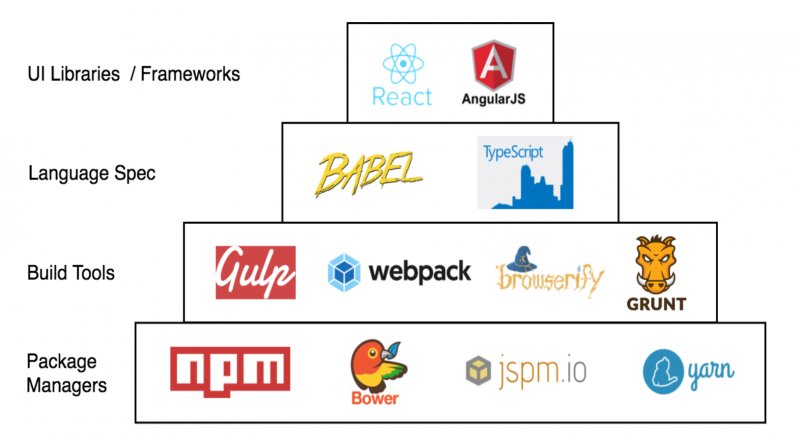The JavaScript ecosystem is in a constant state of flux, a dynamic and sometimes chaotic landscape of innovation. What began as a humble scripting language for web browsers has evolved into a dominant force, powering complex front-end applications, robust back-end servers, and even desktop software. This explosive growth has led to a Cambrian explosion of tools, runtimes, and frameworks, each vying to offer better performance, enhanced security, or a superior developer experience. For developers, navigating this ever-shifting terrain can be both exhilarating and daunting.
Today, the conversation is no longer just about which front-end framework to choose. It extends to the very foundation of our applications: the JavaScript runtime. While Node.js has been the undisputed champion for over a decade, new contenders like Deno and Bun are challenging the status quo with fresh architectures and philosophies. This competitive pressure is fostering a renaissance in server-side JavaScript, pushing the boundaries of speed, security, and standards compliance. This article delves into the modern JavaScript ecosystem, exploring the key players in runtimes, frameworks, and tooling, and examines the crucial role of open standards in ensuring a cohesive and interoperable future.
The New Age of JavaScript Runtimes: Beyond Node.js
For years, Node.js News dominated the server-side JavaScript narrative. Its event-driven, non-blocking I/O model revolutionized back-end development. However, its reliance on a centralized package manager (NPM) and a module system (CommonJS) conceived in a different era has created opportunities for new approaches. Enter Deno and Bun, two modern runtimes built from the ground up to address the perceived shortcomings of Node.js.
Deno: Security and Modern Standards First
Created by the original author of Node.js, Ryan Dahl, Deno represents a fundamental rethinking of what a JavaScript runtime should be. Its core philosophy is “secure by default.” Unlike Node.js, which grants scripts full access to the file system and network, Deno scripts run in a secure sandbox. Access to sensitive APIs must be explicitly granted via command-line flags. This proactive security model helps prevent common vulnerabilities.
Deno also embraces modern JavaScript standards out of the box. It uses ES Modules (ESM) as its default module system and has first-class support for TypeScript without requiring a separate compilation step. Furthermore, it ships with a comprehensive built-in toolchain, including a dependency inspector, code formatter (deno fmt), linter (deno lint), and test runner (deno test). This “all-in-one” approach simplifies project setup and ensures consistency across a team. The latest Deno News often revolves around its growing compatibility with the Node.js ecosystem and its enterprise-focused deployment platform, Deno Deploy.
Here is a simple Deno web server. Notice how running it requires explicit network permissions.
// server.ts
// To run this file, use the command:
// deno run --allow-net=:8000 server.ts
import { serve } from "https://deno.land/std@0.192.0/http/server.ts";
console.log("HTTP server running on http://localhost:8000/");
serve((_req) => new Response("Hello from Deno!"), { port: 8000 });Bun: A Laser Focus on Performance
If Deno’s mantra is security, Bun’s is speed. Bun News has consistently made headlines for its astonishing performance benchmarks. Built using the Zig programming language and powered by Apple’s JavaScriptCore engine (as opposed to V8 used by Node and Deno), Bun is designed to be an incredibly fast, all-in-one toolkit. It acts not only as a JavaScript runtime but also as a package manager, bundler, and test runner.
Its package manager is NPM-compatible but significantly faster at installing dependencies. Its built-in bundler and transpiler can replace tools like Webpack News, Babel News, and SWC News for many use cases, offering near-instantaneous build times. Bun’s primary goal is to reduce complexity and increase speed across the entire development lifecycle, from installing packages to running tests and bundling code. Its rapid development and focus on Node.js compatibility make it a compelling choice for performance-critical applications.
The Framework Frontier: From Components to Meta-Frameworks
The innovation in runtimes is mirrored in the world of web frameworks. The component-based model, popularized by libraries like React, has become the de facto standard for building user interfaces. However, as applications grew more complex, the need for more opinionated, full-stack solutions became apparent. This gave rise to meta-frameworks, which build on top of UI libraries to provide a complete development experience.
Established Leaders and Their Full-Stack Counterparts
The “big three” continue to be foundational pillars. React News centers on its vast ecosystem and flexible component model. Vue.js News is praised for its gentle learning curve and progressive adoption capabilities. Angular News provides a comprehensive, opinionated framework ideal for large-scale enterprise applications.
However, the most exciting developments are happening in the meta-framework space.
- Next.js News (built on React) has become a dominant force, popularizing hybrid rendering strategies like Server-Side Rendering (SSR) and Static Site Generation (SSG). Its file-based routing and integrated data-fetching patterns simplify building complex, SEO-friendly applications.
- Nuxt.js News offers a similar powerful and structured experience for the Vue.js ecosystem.
- Remix News (also React-based) focuses heavily on web standards and fundamentals, providing a robust data-loading and mutation model that works seamlessly with HTML forms.
These frameworks abstract away the complexities of server rendering, code splitting, and routing, allowing developers to focus on building features.
Here’s a basic example of a server-rendered page in Next.js, demonstrating how data is fetched on the server before the page is sent to the client.
// pages/posts/[id].js in a Next.js project
export default function Post({ post }) {
// The 'post' prop is populated by getServerSideProps
return (
<article>
<h1>{post.title}</h1>
<p>{post.body}</p>
</article>
);
}
// This function runs on the server for every request
export async function getServerSideProps(context) {
const { id } = context.params;
const res = await fetch(`https://jsonplaceholder.typicode.com/posts/${id}`);
const post = await res.json();
// The returned object's props will be passed to the page component
if (!post) {
return { notFound: true };
}
return {
props: {
post,
},
};
}The New Wave of UI Innovation
Beyond the established players, a new wave of frameworks is pushing boundaries. Svelte News and its meta-framework SvelteKit have gained immense popularity by moving work from the browser at runtime to a compiler at build time, resulting in highly efficient, vanilla JavaScript output. SolidJS News follows a similar “compiled” approach but retains a JSX-based syntax familiar to React developers, offering fine-grained reactivity and top-tier performance.
The Tooling Revolution: Faster, Smarter, and More Integrated
A modern JavaScript project relies on a sophisticated toolchain for bundling, transpiling, linting, and testing. For years, this space was dominated by flexible but complex tools like Webpack and Babel. The latest trend is a dramatic shift towards speed and simplicity, largely achieved by leveraging languages like Go and Rust.
Build Tools and Transpilers
Vite News has fundamentally changed the developer experience for front-end projects. During development, it leverages native ES Modules in the browser, eliminating the slow bundling step required by tools like Webpack. This results in near-instantaneous server start and Hot Module Replacement (HMR). For production, it uses Rollup News under the hood for a highly optimized build. This hybrid approach offers the best of both worlds.

This speed revolution extends to transpilation. While Babel is incredibly powerful and extensible, its JavaScript-based architecture can be a bottleneck. Tools like SWC and esbuild, written in Rust and Go respectively, offer the same core functionality (e.g., converting TypeScript/JSX to JavaScript) at speeds 10-100x faster. These new tools are now being integrated into major frameworks and tools, including Next.js (with Turbopack News) and Vite.
A simple Vite configuration file demonstrates its focus on simplicity:
// vite.config.js
import { defineConfig } from 'vite';
import react from '@vitejs/plugin-react';
// https://vitejs.dev/config/
export default defineConfig({
plugins: [react()],
server: {
port: 3000, // Configure the development server port
},
build: {
outDir: 'build', // Specify the output directory for production builds
},
});Testing and Automation
The testing landscape has also evolved. While Jest News remains a popular choice for unit testing, Vitest News has emerged as a Vite-native alternative, offering a compatible API with incredible speed. For end-to-end testing, tools like Cypress News and Playwright News provide powerful APIs for automating browser interactions, making it easier than ever to write reliable tests that simulate real user behavior.
Best Practices: Thriving in a Multi-Runtime, Multi-Framework World
With so many options, the key to success is not just picking the “best” tool, but understanding the principles that underpin the entire ecosystem. The most important of these is the adherence to open web standards.

Embrace Web Standards for Interoperability
The fragmentation of runtimes highlights the critical importance of web-standard APIs. APIs like `fetch`, `Request`, `Response`, and `ReadableStream` are now being implemented consistently across browsers, Deno, Bun, and modern Node.js. Writing code that uses these standard APIs, rather than platform-specific ones (like Node’s `http` module), makes your code more portable and future-proof.
This `fetch` example is a perfect illustration of portable code. It can run in a browser, in Deno, in Bun, and in modern Node.js without any changes.
// universal-fetch.js
// This code works across browsers, Deno, Bun, and modern Node.js
async function fetchUserData(userId) {
try {
const response = await fetch(`https://jsonplaceholder.typicode.com/users/${userId}`);
if (!response.ok) {
throw new Error(`HTTP error! status: ${response.status}`);
}
const data = await response.json();
console.log(`User Name: ${data.name}`);
console.log(`Email: ${data.email}`);
} catch (error) {
console.error('Failed to fetch user data:', error);
}
}
// Example usage:
fetchUserData(1);Tips and Considerations
- Choose Tools for the Job: Don’t chase the latest trend. A stable, well-supported framework like Next.js or Nuxt.js is often a better choice for a production application than a bleeding-edge tool. Use Bun for its performance benefits where they matter most; use Deno when security and a streamlined toolchain are paramount.
- Focus on Fundamentals: A deep understanding of JavaScript (ES6+), TypeScript, and core web APIs will serve you better than surface-level knowledge of a dozen frameworks. The latest TypeScript News, for example, often introduces powerful features that can improve code quality regardless of the framework you use.
- Stay Informed, Not Overwhelmed: Subscribe to newsletters and follow key figures, but avoid “framework fatigue.” Pick a stack and get proficient with it. The core concepts you learn (state management, component architecture, server-side rendering) are often transferable.
Conclusion
The JavaScript ecosystem is more vibrant, competitive, and innovative than ever before. The rise of new runtimes like Deno and Bun is pushing Node.js to evolve, while the explosion of meta-frameworks and next-generation build tools is dramatically improving developer productivity and application performance. This “fragmentation” is not a sign of weakness but of a healthy, maturing ecosystem where competition drives progress.
For developers, the path forward is clear: embrace the change, but anchor yourself in the fundamentals. By focusing on web standards, understanding the trade-offs between different tools, and continuously learning, you can effectively navigate this dynamic landscape. The future of JavaScript is not about a single winner-takes-all tool, but a rich, interoperable ecosystem where developers have the freedom to choose the best solution for their specific challenges.

